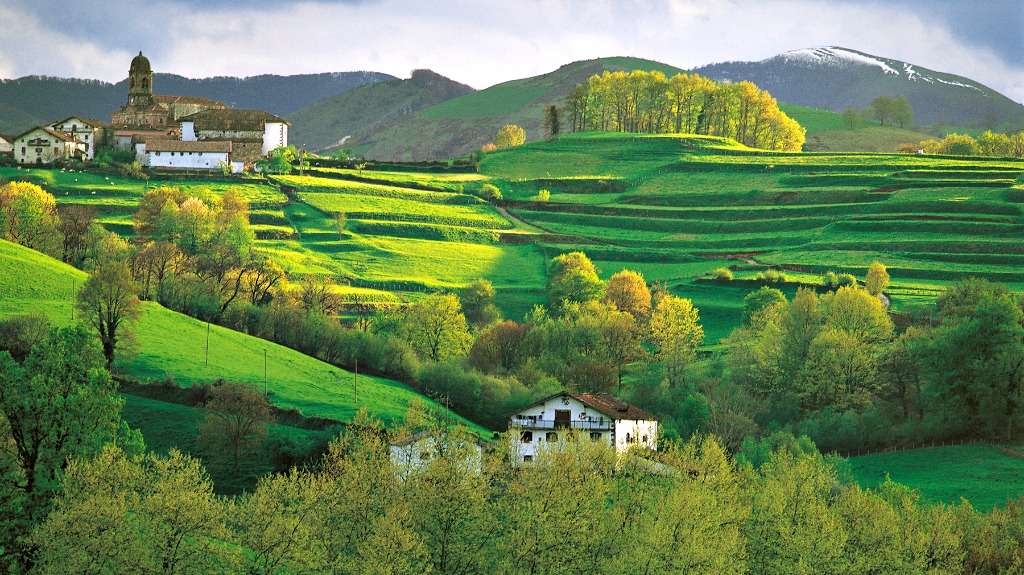
Navarra has a rich history. From the first traces of humanity through to the Romanisation, the Navarran and French dynasties and the Carlist wars, and continuing to the present day, all these eras have left their mark on the landscapes, in the towns and in the interesting artistic heritage found there. It is a history filled with battles and covenants involving monarchs, pilgrims,"indianos" and the peoples of the region, and which has shaped their character and their individuality. This is the story of a millennial kingdom.
Confirmation of the first settlements in Navarra is provided by the Lower Palaeolithic remains (600,000 BC to 40.000 BC) found in Coscobillo, Urbasa, Estella, Lezáun, Lumbier and Viana. Later on, Neolithic culture converts the hunters into farmers and shepherds, and the Bronze Age means dolmens and flint workings spring up all over the pasturelands; at this time, megalithic constructions appear throughout the land, from Viana, Cirauqui and Artajona, to the mountain ranges of Urbasa and Aralar, reaching as far as the towering Pyrenean peaks.
The Iron Age teaches the primitive Basque inhabitants new techniques and ways of life brought by the Celts and Celtiberians from Central Europe.
Rome’s presence is weak in the saltus vasconum or northern and forested area –the Mountains–, where the autochthonous Basque language prevails, and cultural exchange is minimal; on the other hand, as of the 2nd century AD, Roman influence becomes more consolidated in the ager vasconum, the middle area, which is more accessible and has greater natural resources. Within the saltus, in 75 AD, Pompey occupies Iruña, the main Basque city, where he founds the Roman city named after him, Pamplona.
With the decline of the Roman Empire, the Basque tribes recover their influence over the Roman ager, extending it furthermore to include neighbouring areas. At the same time, they defend themselves against military incursions by the Visigoth monarchs, who seek to consolidate their political influence in the north of the peninsula. These same Basques also oppose the presence of the Franks, who threaten their independence from the northern slopes of the Pyrenees. The Battle of Roncevaux against Charlemagne in 778 stalls the plans of the powerful Frankish monarch in this part of the Pyrenees.
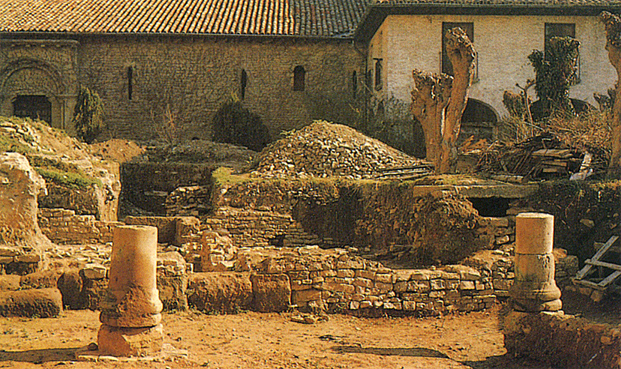
A new threat emerges with the arrival of the Moors, who manage to occupy the Ebro basin in 714. Nevertheless, the Moorish presence is weak, as it will fail to take hold either politically or socially. There soon arises a Christian core in opposition to the Moors, which by the 9th century will end up politically transforming the autochthonous dynasty of the Íñigos into the first Navarra dynasty.
It will be succeeded by the Jimenos, politically more consolidated. Sancho Garcés (905-925), the dynasty’s first monarch, embraces a committed policy of territorial expansion against the Moors, whereby he forms alliances with the other Christian kingdoms. Despite the advances made by Sancho Garcés, who occupies the district of Estella, fords the Ebro and reaches Nájera and Calahorra (914), the Moorish presence will remain in the Ribera for a further century, as Tudela will remain under Moorish control until the year 1119.
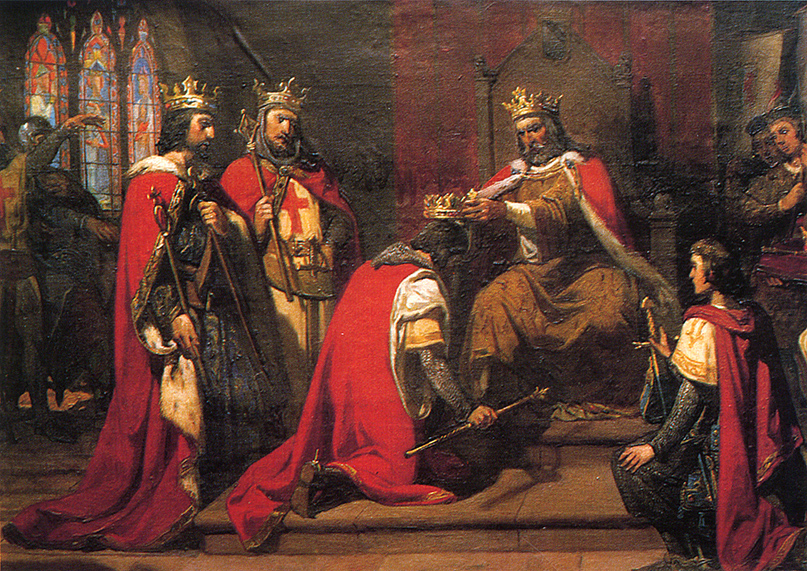
Sancho Garcés III el Mayor – the Elder (1004-1035) rules over the greater part of the Peninsula’s Christian domains: Pamplona, Nájera, Aragon, Sobrarbe, Ribagorza, Castile and Leon, at the same time as he lays claim to Gascony and the County of Barcelona. His reign leads to the social, political and economic expansion of the kingdom of Pamplona, with major territorial gains. This monarch organises the Way of Santiago, introduces the Romanesque and spreads the Cluniac culture throughout his kingdoms.
At the end of the 9th century, the kingdom of Pamplona is forced to bring its territorial expansion to a halt, held in check by the advance of its powerful neighbours, Castile and Aragon. Thus its southward expansion is halted at the same time as it lives under the constant threat of political annexation.
Hovering between independence and incorporation within the political sphere of the French, Castilian and Aragonese monarchs is the awkward status that prevails in Navarra during the Early Middle Ages.
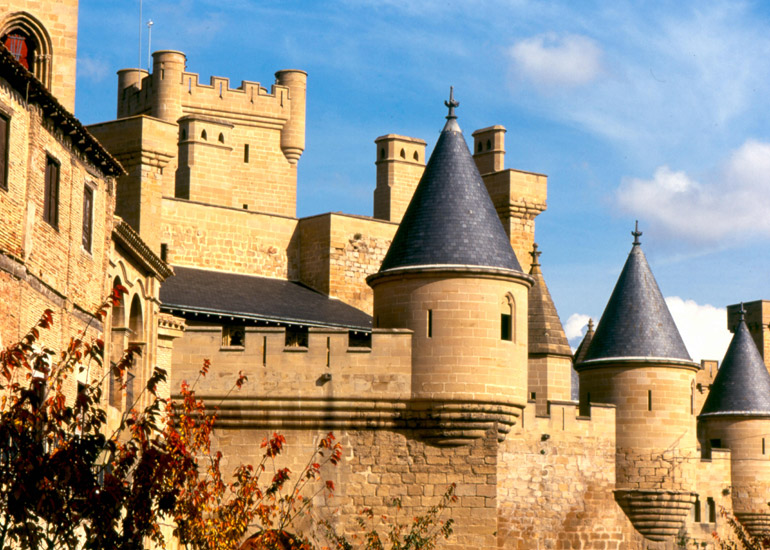
From 1076 to 1134 it will remain part of the Aragonese crown, from which it will secede during the reign of Garcia Ramirez (1134-1150), thus restoring its political independence; in the ensuing reign of Sancho el Sabio – the Wise (1150 – 1194), the kingdom of Pamplona will become known as the Kingdom of Navarra, which is interpreted as a gesture of political affirmation and territorial sovereignty in the face of annexationist threats from other Peninsular kingdoms, and especially from Castile.
Nevertheless, the process involving the loss of territory continues, and in 1200, under the reign of Sancho el Fuerte – the Strong (1194 – 1234) the kingdom is deprived of the territories of Alava, Guipuzcoa and the Duranguesado, in Vizcaya, which are conquered by the Castilian monarch. Thereafter, Navarra, blocked to the west by the frontier with Castile, will be forced to focus its policy of territorial expansion largely towards the north, the French lands of Ultrapuertos, and to the east, the border tract with Aragon.
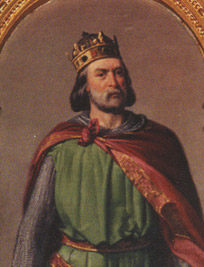 The death of Sancho VII el Fuerte in 1234 brings the Navarrese dynasty to an end and the kingdom falls under French influence, in search of an ally that will ensure its survival in the face of constant pressure from Castilians and Aragonese alike. The first to be installed on the throne is the House of Champagne (1234 – 1274), which is succeeded by the Capetian dynasty, which between 1274 and 1326 simultaneously occupies the thrones of France and Navarra.
The death of Sancho VII el Fuerte in 1234 brings the Navarrese dynasty to an end and the kingdom falls under French influence, in search of an ally that will ensure its survival in the face of constant pressure from Castilians and Aragonese alike. The first to be installed on the throne is the House of Champagne (1234 – 1274), which is succeeded by the Capetian dynasty, which between 1274 and 1326 simultaneously occupies the thrones of France and Navarra.
The House of Evreux (1328-1425) initiates a time of intense relations in the political life of the Peninsula and Europe overall, especially during the reign of Charles II, obsessed by occupying the French throne; the reign of Charles III the Noble (1387 – 1425) strikes a balance between cultural and material prosperity; testifying to this is the splendour of the Navarrese Gothic, evident in artistic works such as the Royal Palace in Olite and this same monarch’s sepulchre in Pamplona Cathedral.
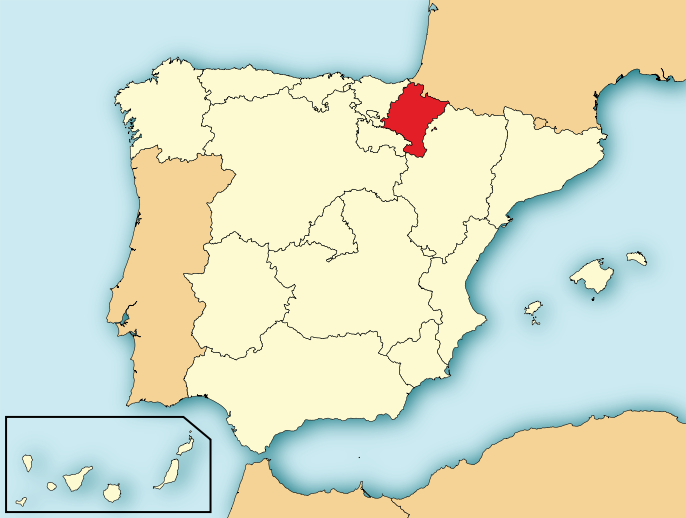
The death of Charles III gives rise to a serious conflict regarding his succession. This is no more than the first signs of a far-reaching institutional and social crisis that will lead to civil war. John II, who heads the camp of the Agramonteses, is married to Blanca, the heir to the Navarrese throne, and has been King of Navarre and of Aragon since 1458; opposed to him is his step-son, the legendary Charles, Prince of Viana, who heads the camp of the Beaumontes in their quest, which was never to be fulfilled, to occupy the throne of Navarra.
This state of internal weakness will last for half a century and will finally be exploited by Ferdinand the Catholic who, in support of the Beaumonteses, invades Navarra in 1512, thus making it part of the Crown of Castile. Soundly defeated, Don Juan and Doña Catalina de Albret, the last monarchs of Navarre, seek refuge on the other side of the Pyrenees, which they will never cross again, and will uphold the dynasty that, as of 1555, will give rise to the House of Bourbon, which will reign in France until the 1789 revolution, and in Spain from 1700 onwards.
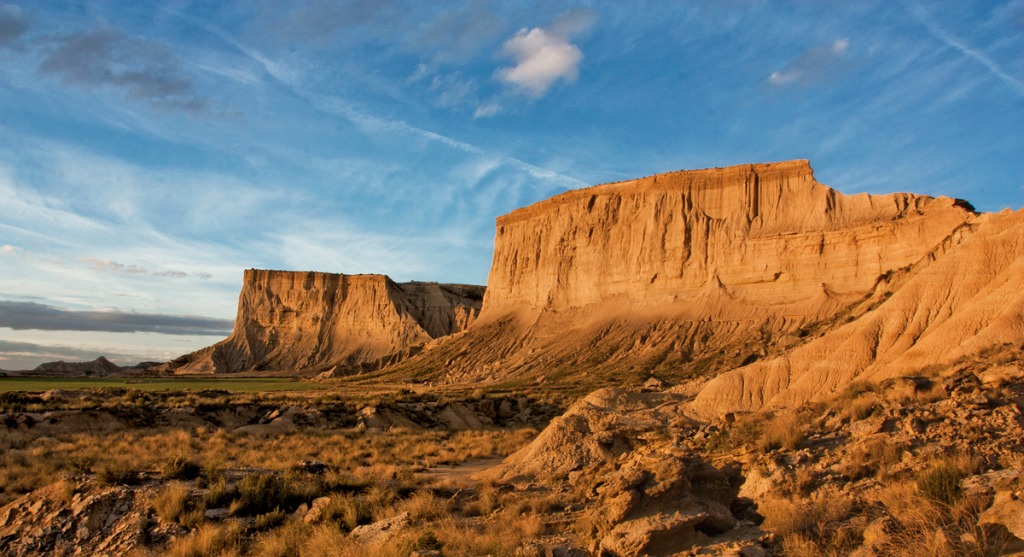
Following its conquest by Castile, Navarra is governed by a Viceroy, who exercises the powers of a monarch in Pamplona. This situation will last for four centuries. Meanwhile, the kingdom’s institutions are maintained, especially the Cortes, which is convened throughout the 16th, 17th and 18th centuries to legislate and approve the kingdom’s financial contributions to the ventures of the Spanish monarch. The Kingdom’s Council (Diputación) is founded in 1576 as a standing governing body in representation of the Cortés when the latter is not sitting: for five centuries this institution has been the exponent of Navarra’s own administration and since the 19th century it has persisted under the name of Diputación Provincial (Provincial Council), Diputación Foral de Navarra (Regional Council of Navarra), and since 1982, Gobierno de Navarra (Government of Navarra).
The end of the 15th century’s internal rivalries, which concluded with the victory of the Beaumontes’ camp and the Castilian conquest, lead to an economic resurgence that brought with it the recovery of demographic equilibrium, affected by the protracted civil war. It also brought stability to economic life and reinforced the foundations of the institutional structure of the Kingdom of Navarra, as it continued to be called until the middle of the 19th century.
The situation of political and institutional stability begins to deteriorate in the second half of the 18th century, with the centralist policies of the Bourbons. This will generate ever-increasing tension that will explode in 1833 in the form of the First Carlist War.

The military conflict will conclude in 1839, with an armistice on the part of the Carlists, and from an institutional and political perspective, it will be embodied in the so-called Ley Paccionada of 1841.
By virtue of this law, the historical Kingdom of Navarra becomes part, under the status of Province, of the liberal state, whilst it still maintains institutions and legislation from its age-old system of Fueros (regional rights), especially those involving taxation and the administration.
This particular situation persisted throughout the Restoration, the 2nd Republic and Franco’s regime. With the advent of democracy and following the Spanish Constitution of 1978, the regional system for Navarra becomes integrated within the new institutional regime, by virtue of the Organic Law of 1982 for the Reintegration and Improvement of the Régimen Foral (Regional System) of Navarra.